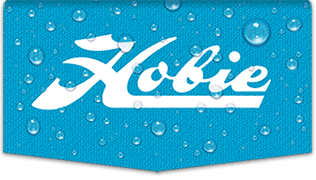|
We say "weight," but there's actually several factors that I'd include in this. The metal gets older and has more wobble, the rudders are a heavier yet not as stiff, and some other minor stuff. But we have hulls that weigh different amounts depending upon year of manufacture as a starting point. Any repair work, bottom jobs, paint, and gel coat all add to your weight.
But your question is how much water does a hull soak up. There are two sources of water -- leaks and condensation. Condensation should be relatively minor, although air humidity makes a difference. Leakage is vastly different between boats. Once the water is in your hull, the next question is how fast do you get it out. And how thoroughly. We can also throw in the quality of the workmanship inside the hulls in determining how well sealed the fiberglass is. I'm not sure how much foam there is inside our hulls. Oh, and all those chips and scrapes off your hull shave the weight down.
So tons of variables to make any comparing boat to boat relatively meaningless. I'm not sure any engineering types have done a study. The boat manufacturing industry really doesn't care about this factor, as it only applies to used boats. There are very few manufacturers who support their product like Hobie does.
Weight of hulls according to MBounds is 83 to 90 pounds stripped. A gallon of gelcoat weighs 9 - 10 pounds. So gelcoating both hulls would add about 5 pounds per hull, or slightly more than 5%. A gallon of water weighs 8 pounds. If your hull soaks up a gallon of water, that's about 9%. Paint also adds weight.
I've got a set of extra hulls that are disconnected to the boat. Tomorrow I'd see if I can get a weight on them. By the way, I'd worry more about the condition of my sails rather than the weight of my hulls.
I understand SRM's argument of DFL is not a fun place to be. But you also have to adjust your goals and think about this. If you want the podium, you're going to pay money and spend time. If that's worth it to you, that's great. But racing can and should be fun on other levels.
Last Saturday my fleet did its annual race. I took as crew a guy who is a boardsailor, but had never been on a boat. He's thinking of buying a H-16 and wanted to try it. Okay, so some experience, but not a whole lot. He didn't know where his weight should be, had to be guided through sail sets, and I did better later in the day at tacking sailing by myself. I'm still getting used to the fact that cats have some serious limits on pinching. Course was an upwind/downwind.
First race we were still on shore. I was having a problem with setting up the main sheet and I wanted to give my crew an idea of what going out on the wire meant. Second race, we end up drifting to the line too fast, had to go around and try again, and blew the tack. Over the line way late. Not much we can do with the race.
Third race I missed a horn and got behind the start. Again, not much we can do. Fourth race we're not in bad shape at the start. Not as much hustle upwind as I would have liked, but the old main sheet really sucks for setting up. We also underlay the mark. We round the upwind mark next to last, with two boats ahead that we stood a chance on. They went one way, I went the other. I felt we'd get better wind, and we'd also have the chop behind us on the way to the line. I'd also avoid a gybe. Just as we're getting close to the gybe point, a heavy boat passes us on the outside of the course. I decide to gybe a smidge early, figuring I'd pick up some surfing from the boat wake, which would blend into the chop but heighten its effect.
Yes, a H-16 doesn't surf well, but it does give you a gain. End result was I passed the two boats I thought I stood a chance of gaining on. I think we finished with three boats behind us. Not at the front of the fleet, but pretty well done all things considered, and my crew is very excited. Fifth race he decides to try the wire. We do about a hundred feet, and then he's going for the ride along the side we've all been on. Finally get him back on board but way behind. Instead of finishing the race, I showed him what a 16 will do on a reach. We had water flying all over us. Ended up doing about 11 - 12 knots in a lot of chop.
End of the day was DFL. But I had fun, and helped convince someone that buying a 16 makes sense. I figure I won just as much as the guy on the podium.
Expectations and goals. Racing can be a lot of fun even if you aren't the greatest sailor if you manage your expectations and goals.
And some fleets are beginning to do a class for the older boats if there are enough of them.
Jim Clark-Dawe
|






